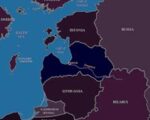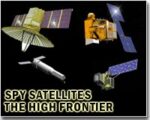As drone warfare proliferates across global conflict zones—from Ukraine to the Middle East—nations are racing to field laser-based air defense systems. These directed energy weapons (DEWs) offer a cost-effective solution to countering swarms of low-cost unmanned aerial systems (UAS), which increasingly saturate traditional kinetic defenses. The shift marks a doctrinal and technological inflection point in short-range air defense (SHORAD) strategy.
Drone Saturation Drives Demand for Non-Kinetic SHORAD
The widespread use of drones in modern warfare—ranging from commercial quadcopters to military-grade loitering munitions—has overwhelmed conventional air defenses. In Ukraine alone, thousands of drones are deployed monthly for ISR and strike roles. Israel’s recent conflicts with Hamas and Hezbollah have also seen mass drone incursions targeting urban centers and military installations.
Traditional interceptors like missiles or autocannons are effective but costly and limited in magazine depth. For example:
- A single Tamir interceptor from Israel’s Iron Dome costs $40,000–$50,000 per shot.
- Stinger MANPADS cost upwards of $120,000 per missile.
- Meanwhile, a commercial FPV drone used in attacks may cost less than $1,000.
This economic asymmetry has driven militaries to seek scalable solutions. Directed energy systems promise engagements at pennies per shot with virtually unlimited magazines constrained only by power supply and cooling capacity.
Iron Beam: Israel’s Operational Laser Shield
Israel leads the global race in operationalizing laser-based SHORAD. Rafael Advanced Defense Systems’ Iron Beam is a high-energy laser (HEL) system designed to intercept rockets, mortars, drones, and other aerial threats at short ranges up to 7 km.
Key specifications include:
- Power output reportedly between 100–150 kW class lasers
- Mounted on mobile platforms for rapid deployment
- Integrated with Iron Dome’s radar and C2 architecture
The Israeli Ministry of Defense confirmed successful trials against UAVs and mortars in April 2022. In May 2024 during Operation Shield Arrow II over Gaza, unconfirmed reports suggest Iron Beam was used operationally alongside kinetic interceptors for the first time—a potential milestone in combat deployment of HELs.
U.S. Army Fields DE M-SHORAD on Stryker Platforms
The U.S. Army has prioritized directed energy under its Maneuver Short-Range Air Defense (M-SHORAD) program. In August 2023, the first platoon equipped with Directed Energy M-SHORAD (DE M-SHORAD) was delivered by Kord Technologies (a Leidos subsidiary) using Lockheed Martin’s 50 kW-class laser mounted on Stryker A1 vehicles.
This system is designed to counter Group I–III UAS threats (up to medium-sized drones), rockets and artillery shells:
- Stryker-mounted HEL offers mobility with organic power generation
- Cued by EO/IR sensors and radar for autonomous engagement loops
- Expected full-rate production decision anticipated by FY2025 after operational testing
The U.S. Army plans to field at least four DE M-SHORAD platoons across Europe by FY2026 as part of its layered air defense revival amid growing drone threats from Russia-aligned forces.
NATO Allies Accelerate Laser Programs Amid Regional Tensions
NATO member states are also investing heavily in DEW-based SHORAD solutions:
Germany: Rheinmetall Skyranger HEL Variant
Rheinmetall is developing a high-energy laser variant of its Skyranger 30 turret system mounted on Boxer or Lynx IFVs. The Skyranger HEL integrates a ≥20 kW laser module with an AESA radar suite and EO/IR sensors for autonomous tracking and engagement.
UK: DragonFire Trials Advance Toward Fielding
The UK Ministry of Defence conducted successful trials of the DragonFire laser weapon demonstrator in January 2024 at Porton Down. Developed by MBDA UK with Leonardo and QinetiQ support, it demonstrated precision against small aerial targets at several kilometers range using beam director optics derived from naval CIWS programs.
France & Italy: Joint Efforts Under EU HYDEF Program
Bilateral cooperation under the European Union’s HYDEF initiative includes funding for ground-based DEW demonstrators targeting drone swarms as part of future integrated air defense networks across southern Europe.
Tactical Implications for Future Conflicts
The adoption of HEL systems introduces new tactical considerations:
- Sustainability: Lasers offer effectively unlimited “magazines” but require robust power generation—often limiting mobility or requiring hybrid-electric platforms.
- Lethality vs Weather Constraints: Laser beams degrade under fog/rain/dust conditions; hybrid SHORAD systems combining kinetic + non-kinetic remain essential.
- CUEING & AI Integration: Real-time sensor fusion via AI enables faster target acquisition cycles critical against fast-moving FPVs or swarm attacks.
- Civilian Infrastructure Protection: Lasers allow precise neutralization near sensitive sites without explosive effects—ideal for urban SHORAD roles near airports or government buildings.
The Road Ahead: From Prototypes to Mass Deployment?
The transition from experimental demonstrators to fielded units remains uneven globally due to technical hurdles—chiefly power density scaling—and procurement inertia. However:
- The U.S., Israel & Germany expect initial operational capability (IOC) between FY2024–FY2026 for key systems like DE M-SHORAD & Iron Beam;
- NATO is exploring standardization pathways via STANAGs for interoperability among allied SHORAD forces;
- Southeast Asian nations including South Korea & Singapore have begun indigenous development efforts amid regional drone proliferation;
- Civilian applications such as airport protection may drive dual-use procurement models post-2030;
If current trends continue—and power generation/cooling tech improves—the next decade could see lasers become standard components within layered air defense architectures globally alongside missiles and guns.










